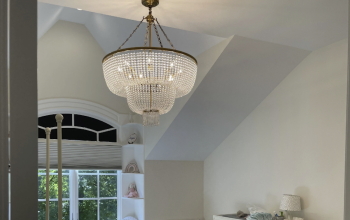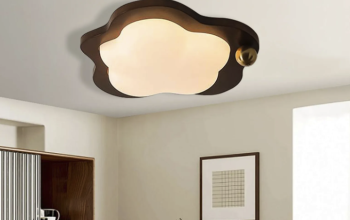Introduction
Ceiling lights play a crucial role in defining the ambiance of a room. They not only provide illumination but also serve as decorative accents that enhance the overall aesthetic appeal of the space. Japanese ceiling lights, in particular, have gained immense popularity owing to their unique blend of elegance and minimalism. In this article, we will take a closer look at these ceiling lights and explore the reasons behind their increasing demand.
The Elements of Japanese Ceiling Lights
Japanese ceiling lights are known for their simplistic yet refined design. They incorporate elements of traditional Japanese architecture and aesthetics, such as clean lines, natural materials, and subdued colors. The most common material used for these lights is paper, specifically washi paper, which is known for its delicate texture and warm glow.
Types of Japanese Ceiling Lights
There are several types of Japanese ceiling lights, each with its distinct style and purpose. Some of the most popular types include:
1. Chochin: These are lantern-style ceiling lights that feature a wooden or bamboo frame covered with washi paper. They come in various shapes and sizes, from small single-light fixtures to large multi-lamp chandeliers.
2. Andon: These are traditional Japanese lanterns that can be used as ceiling lights. They have a square or rectangular frame made of wood, with washi paper panels on all four sides. They emit a soft, diffused light that adds warmth and ambiance to any space.
3. Shoji: These are sliding doors made of wooden frames and washi paper panels. They can be used as ceiling lights by fitting them with a light source behind the paper panels. Shoji ceiling lights are perfect for creating a soft, serene atmosphere in a room.
The Benefits of Japanese Ceiling Lights
Japanese ceiling lights offer several benefits that make them a popular choice for homeowners and interior designers alike. Some of these benefits include:
1. Enhance the aesthetics: Japanese ceiling lights are known for their understated elegance and minimalistic design, making them the perfect addition to any modern or traditional interior.
2. Provide warm, diffused lighting: Unlike harsh fluorescent lights or bright LED bulbs, Japanese ceiling lights emit a soft, warm glow that is more comfortable on the eyes and creates a welcoming atmosphere.
3. Create a serene ambiance: Japanese culture values simplicity and tranquility, and Japanese ceiling lights reflect this philosophy by promoting relaxation and calmness.
The Best Places to Install Japanese Ceiling Lights
Japanese ceiling lights can be installed in any room of the house, depending on the type of fixture and the desired effect. Here are some of the best places to install these lights:
1. Living room: Japanese ceiling lights can help create a peaceful and inviting ambiance in the living room, making it the perfect place to unwind after a long day.
2. Bedroom: The warm and diffused lighting of Japanese ceiling lights is ideal for the bedroom, as it promotes relaxation and restful sleep.
3. Dining room: Japanese ceiling lights can add elegance and sophistication to the dining room, making it the perfect place to entertain guests.




